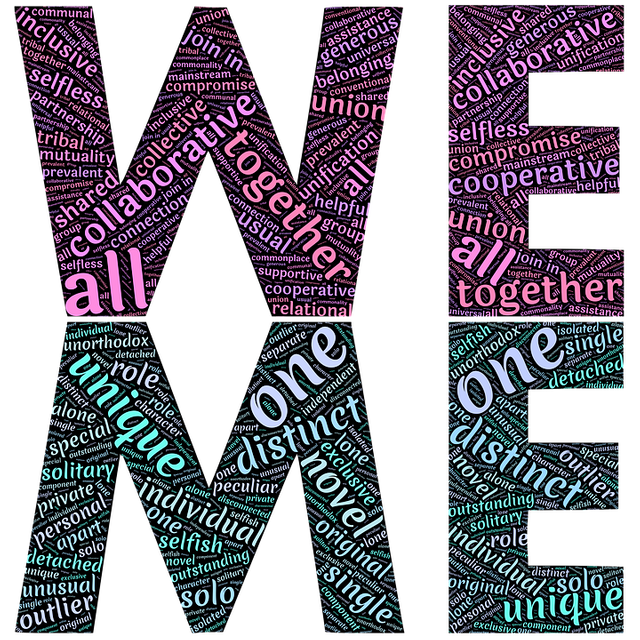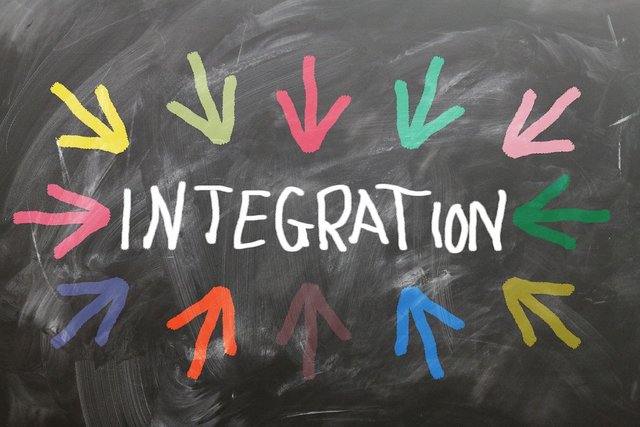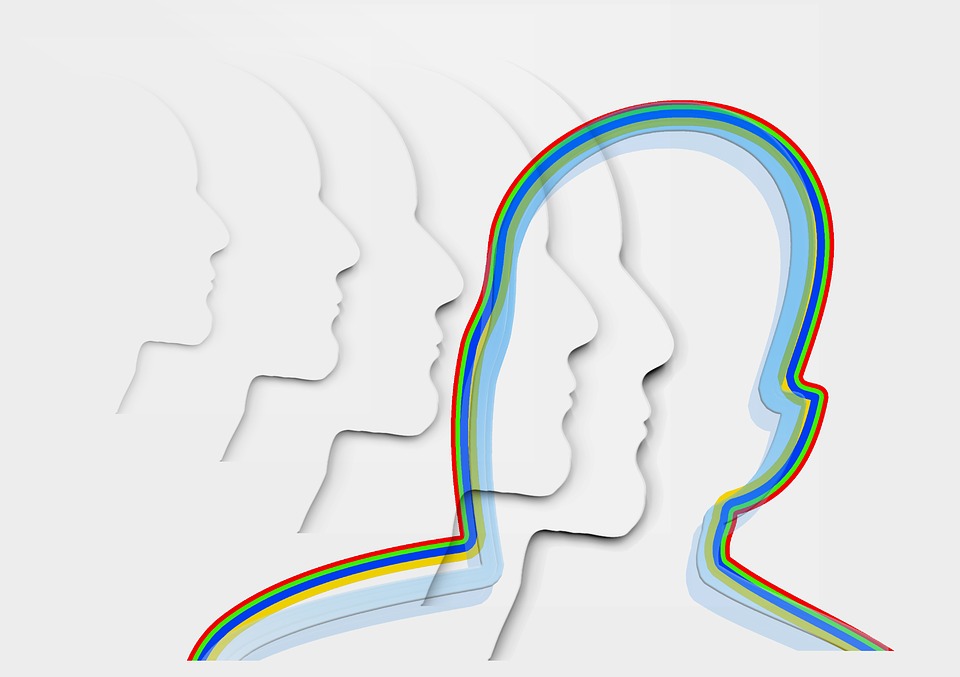Diversity Management - Practical applications. Develop a culture of diversity and get in tune with others. (I Part)
Hello to all,
seeing the interest of the previous post, I want to continue to develop the theme by providing you with some practical tools. In this post and in the next I will try to show you how much wealth and variety there are among the people who make up a company, rather than a group of individuals and that, today more than ever, society rather than a monochromatic picture is a mosaic composed of many tesserae of different colors, shapes and sizes.
The differences can represent a great value, human and entrepreneurial, also useful for a more effective achievement of our objectives or business.
Diversity is not only due to differences in gender, age, culture, but above all by the fact that each person has his own individuality (the set of experiences and knowledge, attitudes, behavior, personality) that makes it unique and special.
Facilitating the inclusion of diversity enhancing the plurality of experiences, behaviors, individual attitudes has a positive impact on the success of the company or group, on the quality of work and on the well-being of the people who work and maintain relationships. For this to happen it is important:
• Create a deep and shared culture of inclusion, integration and reception;
• combating stereotyped elements of closure and injury;
• Allow all the diversity present to feel recognized, appreciated and valued.
Besides representing a regulatory obligation and also for the organization, research and organizational experiences suggest that engaging in initiatives that promote the enhancement and management of diversity can be considered a source of competitive advantage. The main advantages and benefits are active and inclusive diversity management are:
• To enrich one's point of view through the contribution of divergent stimuli;
• Greater creativity and innovation, possibility to compare visions and different cultural perspectives;
• Improvement in the quality of problem solving and decision making processes through the possibility of creating heterogeneous work teams;
• Improvement of the level of motivation of people and therefore also of performance;
• Reduction of interpersonal staff and improvement of the organizational climate;
• Improvement of the corporate image and corporate reputation;
• Greater ability to attract and retain talent resources;
• Greater diversified marketing capacity;
• Greater active organizational flexibility and inclusive diversity management.
Beyond the initiatives on which all industry is engaged, in which all have participated and not excluded or discriminated against.
In our daily lives we are more and more often called upon to deal with colleagues and collaborators who express different ways of being (age, gender, national culture). The first step is to become aware of the elements / dimensions on which diversity is based in our work environment and to shape our behaviors and attitudes to comparison and enrichment, rather than separation and exclusion.
How to put the theory into practice
• We create opportunities for listening and mutual knowledge among all the people who are part of our working group;
• We develop awareness in others about gestures and attitudes that may be detrimental to personal or discriminatory dignity, opposing us and combating episodes arising from prejudices or commonplaces;
• We adopt a style of communication and relationship that is free from stereotypes and clichés that refer to age, religious beliefs, sexual preferences, gender, family situation, ethnicity, race, etc.
We can therefore state that, in order for diversity to be an opportunity for people and for organization, discriminating prejudices and convictions must be addressed and managed.
Every person with his or her own experience, knowledge, attitudes, personality, behavior is a unique value: if put in the best conditions to express their skills can contribute positively to business success.
Develop a work culture that includes diversity
The culture of an organization is formed by the synthesis of how people think, act and perceive work and the world around them.
Everyone is responsible and everyone can contribute to his training, which is constantly evolving, stimulated from inside and outside in an informal and natural way.
Workplace culture has a strong impact on the results an organization produces and can be considered a real company asset. A good inclusion of diversity has a positive impact on the success of the organization and on the quality of life of the people who work there and maintain relationships there.
The target
Organizational behaviors, at any level, so that they are inclusive of diversity, must recognize and value differences as a source of wealth for the organization, integrating them in the process of value creation. Prejudices and discriminating beliefs are forms of individual and social protection that must be addressed and transformed so that diversity is seen as an opportunity for people and for organization.
Each person, if put in the best conditions to express their skills, can contribute to the organization.
Stimulate an attitude of openness
To develop a culture of inclusion, it is necessary to become aware of the elements on which the diversity among people is based and to break down the barriers constituted by prejudices and stereotypes that impoverish the human capital of the company. Some practical tips to achieve this goal can be:
• Adopt as a new rule: "do to others what they would do to themselves", and abandon the old egocentric rule: "do to others what you would have done to you";
• Revise your communication and clean it of prejudices, stereotypes and clichés that refer to: age, gender, sexual orientation, physical skills, ethnicity, race, income, personal habits, religion, type and level of education, work experience, appearance , family status, diet; take advantage of every formal and informal occasion;
• Drafting the relationships within the company to values of civil coexistence and full respect for the dignity, fundamental rights and freedoms of each, by including these principles in company documents (charter of values, code of ethics, promotional campaigns);
• To promptly tackle, discourage and effectively counteract situations and episodes arising from prejudices, stereotypes, clichés; to oppose a culture of closure and superficiality, which impede individual and organizational development and learning and prevent dialogue;
• Recognize and use individual differences in the selection of collaborators and project participants, offering the same opportunities to all, in order to obtain the benefits of an integrated and motivated working group, generating value through the development and implementation of each activity ;
• Open up to listen and evaluate different styles, ideas and perspectives, developing flexibility, accepting that problems and decisions can be taken in a different and yet effective way to achieve company objectives;
• Proposing, at every level, a positive attitude towards human resources, which must be considered as a variegated universe of different personalities and not as an undifferentiated whole, developing a work environment to which everyone is happy to participate;
• Develop and encourage a verbal and non-verbal communication that is conscious, collaborative and aimed at mutual understanding as an effective tool for work, creating space and opportunities to deepen and define better and more effective ways of relationship and exchange.
Promote integration
By promoting the use of initiatives that promote the integration and enhancement of differences as strategic resources, the company can better achieve its objectives. Here are the practical proposals to achieve this goal:
• Develop particular attention to the protection of the rights of minorities in the company, such as women, the elderly, new recruits, disabled people, foreign immigrants, people of different religious denominations; offer everyone the same opportunities and recognition;
• To create awareness among colleagues and collaborators regarding the motivations / cultural models that may imply any attitudes and / or approaches to work that are discriminatory or detrimental to individual dignity;
• Organize work by meeting colleagues and collaborators who show particular needs of a family or personal nature; for example, assistance to children or elderly people who are not self-sufficient, need to undergo frequent therapeutic treatments;
• Facilitate the carrying out of tasks to employees with disabilities, adapting the corporate architectural spaces and the equipment / tools they use, to their particular needs;
• Allow employees of different religious beliefs, enjoyment of work breaks (for example for prayer, perhaps in specially reserved settings) or holidays in times even different from those usually considered (in conjunction with particular religious periods); offer them the opportunity to follow without difficulty or impediment the traditions and / or prescriptions of their religions, both in the management of work activities and diets;
• Support new employees, who have the task of monitoring, accompanying and facilitating their full integration into the company, avoiding that they can be manipulated because of their weakness due to being the last arrivals;
• Encourage, as far as possible, the self-management of working hours and shifts to groups / work teams in which the degree of diversity among the components is high, so as to offer the possibility of responding to the needs of each person by empowering the whole group;
• To make the company an inclusive and non-marginalized organization, where differences can be integrated and mutually enriched, not being a trigger for misunderstandings, bad moods or, worse still, conflicts. Create occasions in which every minority can be known and appreciated by others;
• Promote the creation of working groups with a high level of diversity (cultural, age, ethnic background) to convey the concept of diversity as an enriching value and to encourage employees to confront and find effective ways to work together.
Get in tune with others
Getting in tune means harmonizing, finding an agreement between feelings, ideas and values with the other person.
The objectives
The first approach is to understand if we can trust the other person, if we can lower the defenses and lay the foundations for a lasting relationship. But the stranger and the different alarm us, so in the first approach it is important to send signals of reliability and security.
Initially the risk is high, as both individuals who experience their first interpersonal communication decide to "skin" whether to reject or open up to the relationship.
Knowing how to interpret the interlocutor
The context: It is important to choose a pleasant place, free of noise and interruptions and to dedicate the necessary time to the meeting. An appropriate context helps to create a good psychological climate. An ideal and comfortable environment for the interlocutor is a necessary condition in order to exclude disturbing external factors.
The physical aspect: Who is in contact with many people at work, for example, should have a "neutral" image, neither too aggressive nor too extravagant, so as not to suffer negative prejudices based on the external appearance.
Non-verbal language: It may be useful to assume the same non-verbal behavior of the interlocutor. One could for example "trace" posture, tone of voice, spatial distance of the other. At the beginning, let the other person dance the dance of the movements: if he maintains a closed posture, we try to be composed; if you distance yourself from us, do not get close; if he speaks in a low voice, let us too; if he speaks with many pauses for reflection, we do not anticipate his words. After a while, if we want to understand if we have gained his trust, we begin to change posture or tone of voice. If the other "imitates" us, then it is the sign that we have come into harmony.
The tone of the mood: It is useful to know how to catch the other person's mood, but we must not make the mistake of trying to change it, but rather to use the compliment to respect the person's state of mind. We do not try to pull up a sad person with witticisms: they would feel diminished or assaulted. If our interlocutor is worried, let us address him with serious and respectful ways; if it is ironic, smile or respond to tone but still with the right touch.
Words: From the use of words we can understand the priorities of the interlocutor and therefore his objectives. We try to understand if it uses action verbs or a terminology that refers to reflection. Understand also if you often name people, group climate, or talk about ideas and theories. We try to speak the same language.
The common things: If we do not know the other person, we can break the ice talking about common topics: the new canteen, a stressful day, common interests, pets, weather conditions. This gives us time to observe the interlocutor before tackling important topics related to the topic we want to deal with.
Stimulate the exchange of ideas
We see some useful actions to lower defenses and deal with more personal matters.
Ask open questions: If we do not know the other person, we can break the ice talking about common topics: the new canteen, a stressful day, common interests, pets. This gives us time to observe the interlocutor before tackling important topics.
Share and not convince: Limit yourself to expose your opinion without wanting to convince. If we have a different opinion from our interlocutor, let us hook ourselves to him with phrases like: "I would like to consider another aspect ...", "I would like to add that ...", with the aim of simply widening the vision of the problem. We do not use oppositional ways of saying such as: "Yes, but ...", "It is not so, actually ...", because this would lead to a "fight to the death" between those who are wrong and those who are right.
Suspending prejudices: Do not judge people by saying, for example: "You are the classic guy who ...". When people feel labeled they rebel and are judged, raising the level of aggression.
I hope you enjoyed the content of this post and I refer you to the next one I will publish shortly. Doubts, questions and perplexities are welcome.
Greetings and see you soon.
Daniele








Congratulations @danielemosetti! You received a personal award!
Click here to view your Board
Congratulations @danielemosetti! You received a personal award!
You can view your badges on your Steem Board and compare to others on the Steem Ranking
Vote for @Steemitboard as a witness to get one more award and increased upvotes!